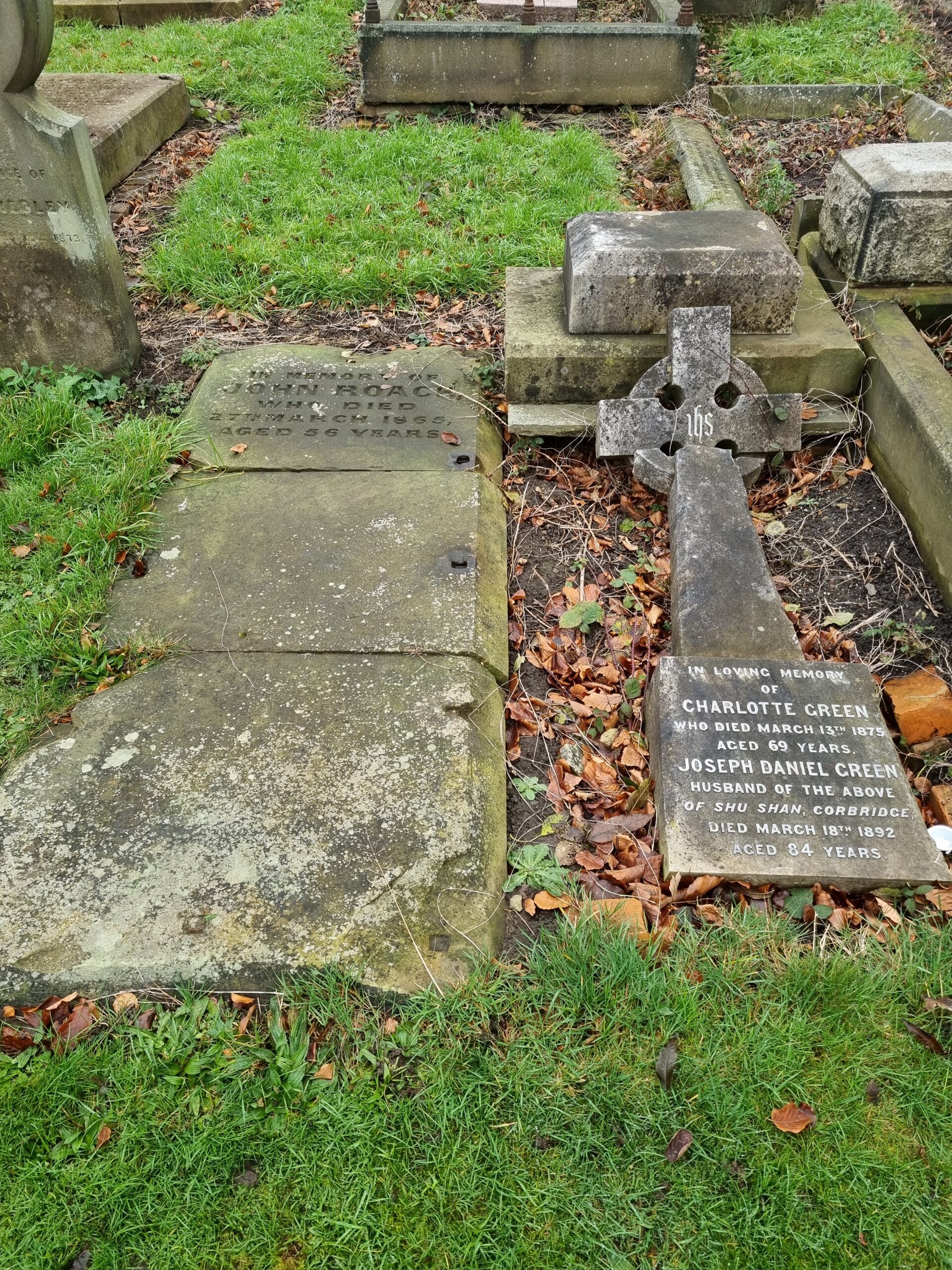BUTLER, COOK, CHOPHOUSE OWNERS. MYSTERIOUS HOUSE NAME.
Situated in the Consecrated/West Section of Jesmond Old Cemetery

This monument is one of those ones where additional details, such as the name of the house, grabs the attention, rather than the names of the people commemorated on the monument. Having removed this monument of its ‘overcoat’ of ivy and weeds, the words ‘Shu Shan’ immediately caught our eye – I’ve previously taught in Shanghai and was intrigued as to how such an Oriental sounding name ended up being recorded on a monument within Jesmond Old Cemetery. However, let’s find out more about Joseph and Charlotte.
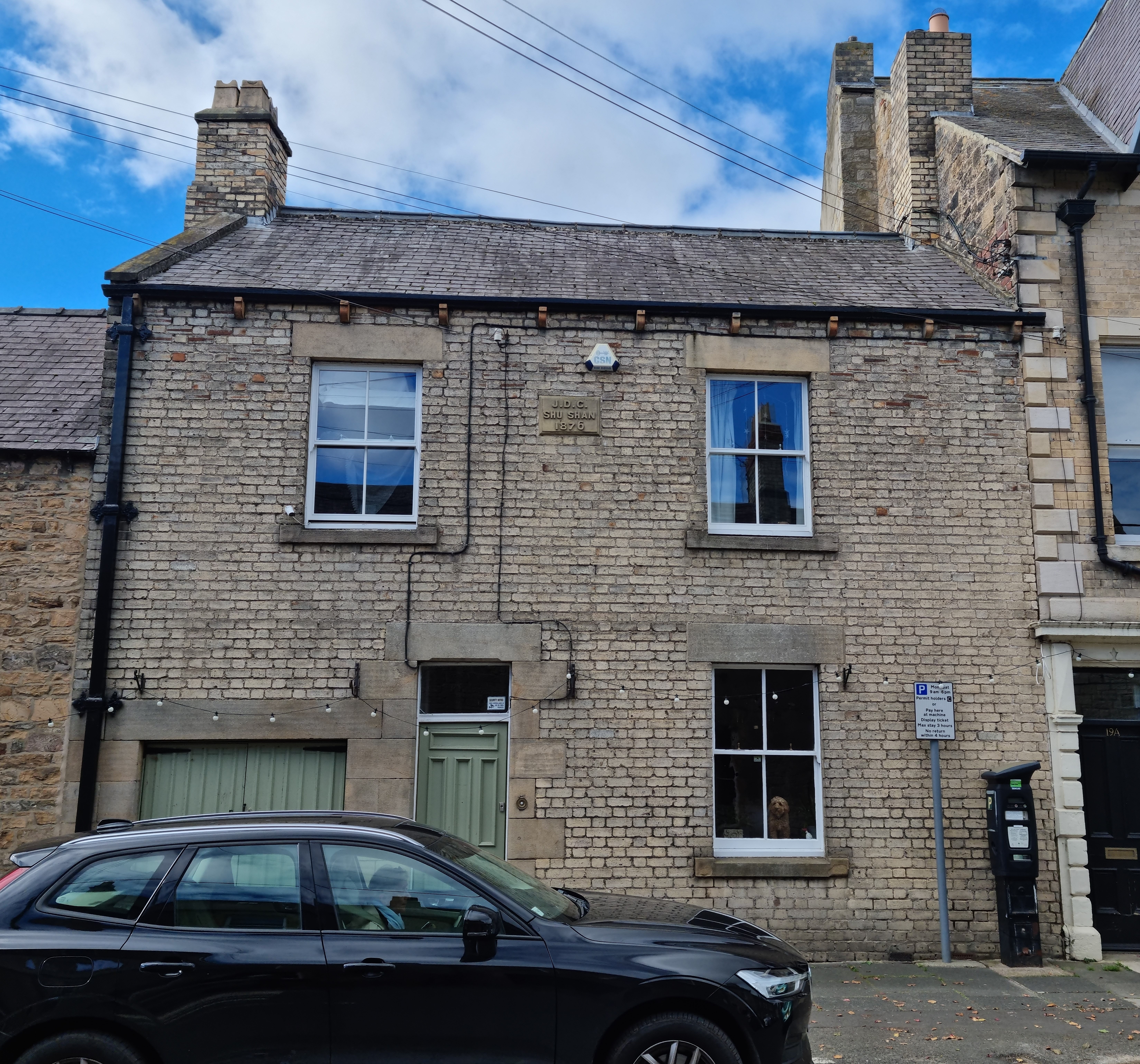
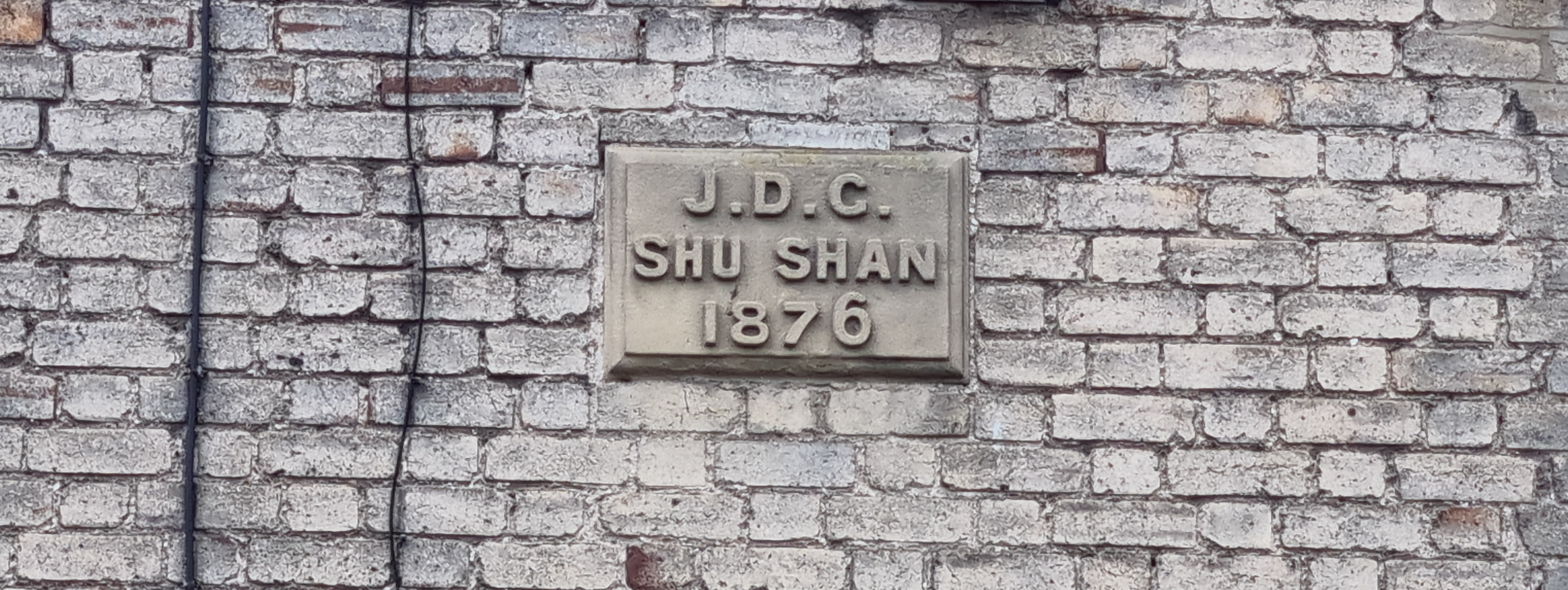
Joseph was born in Gateshead on the 12th November 1807, the first born child of John and Lydia Green. The Green’s went on to have five other children, Robert, Rachel, Lydia, Mary and Barbara.
The 1861 Census records Joseph working as a ‘Butler’ at North Seaton Hall. In 1866, Joseph married Charlotte Roach, who was born 1806 and originally from Coventry. Interestingly, Charlotte’s first husband was called John Roach, who was born in 1806 in Montserrat, West Indies. In the 1851 Census, Charlotte and John are recorded as living at 6, Back Trafalgar Street in the Parish of All Saints, Newcastle, with John, aged 45, being described as a ‘Porter at an Inn’ and Charlotte, also aged 45, being described as a ‘Cook’. By the time of the 1861 Census, Charlotte and John are recorded as now living in 13, Grey Street, Newcastle, with John being described as an ‘Innkeeper’. They had two sons, James (1835 – 1899) and John (1841 – 1874).
In the Newcastle Daily Chronicle, dated Wednesday, April 5, 1865, there is an advert placed by a Mrs. Roach of the London Chop House and Crown Hotel, 13, Grey Street, Newcastle, announcing that ‘Mrs. Roach returns her most sincere thanks to the numerous patrons of her late husband, Mr. John Roach and respectfully requests a continuance of their favours on her own behalf. The business will be conducted in the same manner as hitherto. N.B. Wines, Spirits and Ales of the best quality.’ As an aside, ‘Chophouses’ were established in the 18th Century and were popular through to the early part of the 20th. They were eateries where men would go for lunch if they were at work, and also for dinner if there was no one to cook for them at home. They were places that addressed the necessity of eating, rather than the pleasure of it, with tables often being communal, the clientele predominantly travelling male workers and the food on offer limited to basic bread and meat dishes.

John Roach obviously made an impression on Tyneside as in the Newcastle Weekly Chronicle, dated Saturday, May 17, 1873, an article describes how ‘the last of the windows in St. Nicholas’ Church, Cramlington, has just been filled with stained glass, as a memorial to the late Mr. John Roach, of the Crown Hotel, Grey Street, Newcastle. The subjects employed are ‘The Good Samaritan’ and the ‘The Angel appearing to Cornelius’. Mr. Roach, who was a native of Montserrat, in the West Indies, was well known during his residence in Newcastle as a benevolent and charitable man.’
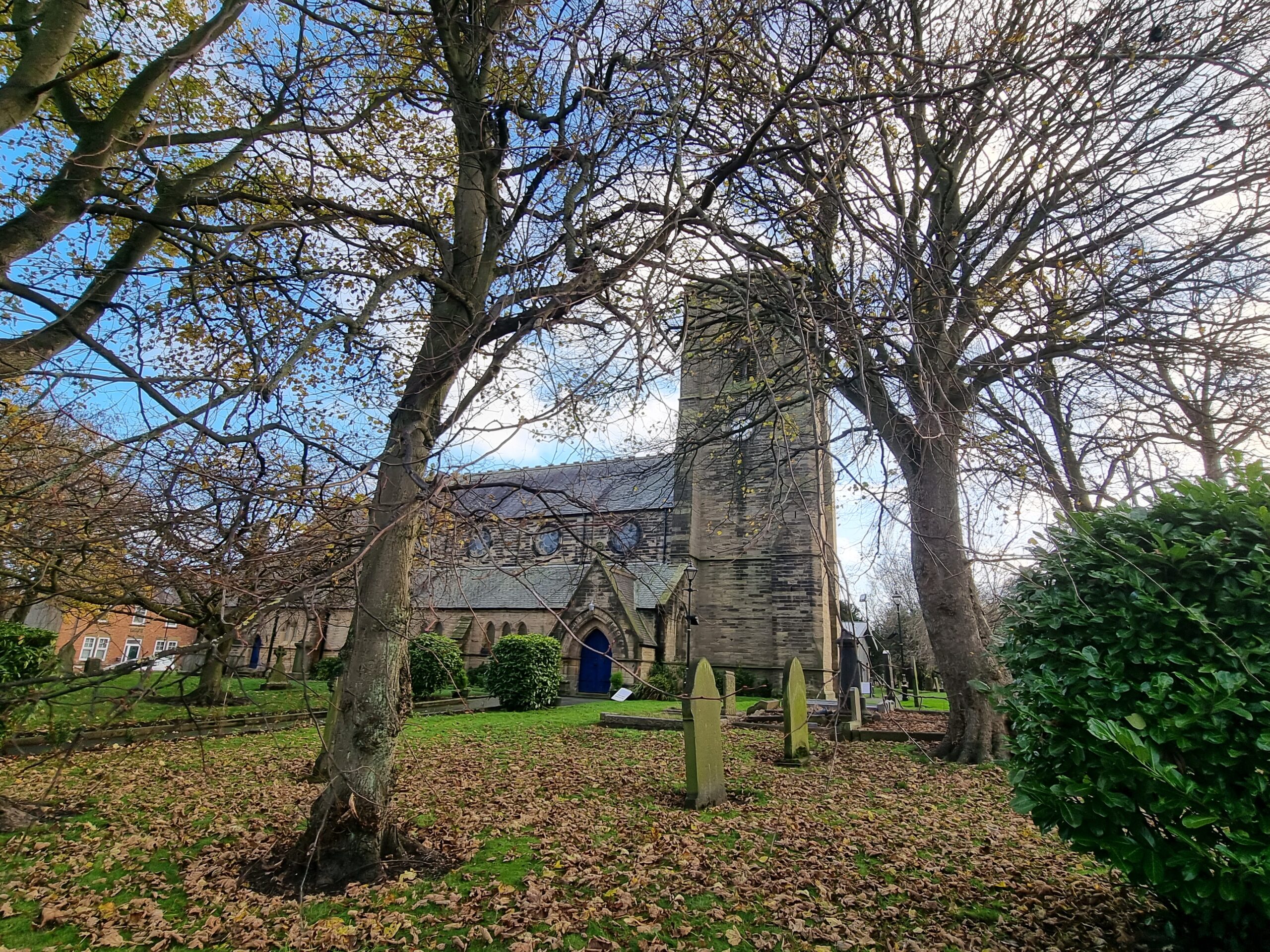
So, being intrigued by this article, off we went to St. Nicholas’ Church, via a bit of a shopping spree in the nearby Dunelm shop!! We came across two lovely ladies who were busy providing a ‘warm space’ in the adjacent Church Hall but they managed to find time to let us into the Church itself, once we explained why we there. All four of us looked at every stained glass window, our excitement increasing (yes, honestly) as we circled the inside of the Church….. but, to no avail. No windows in honour of Mr. Roach were spotted – disappointed or what? However (and luckily), the ‘lovely ladies’ suddenly had a lightbulb (excuse the pun – keep reading) moment as they recalled that a Parishioner had, in the past, came across a pile of stained glass hidden underneath the altar and had restored the various pieces, like a giant jigsaw puzzle, resulting in two beautiful windows which were subsequently placed on a special mount adjacent to the altar. Excitedly, she fumbled for the switch next to the ‘special mount’ and, oh joy, the two windows we were looking for lit up like a Christmas Tree!! Fabulous.
So, here they are, in all their glory. How magnificent that someone took the trouble to restore them and not throw them out…..

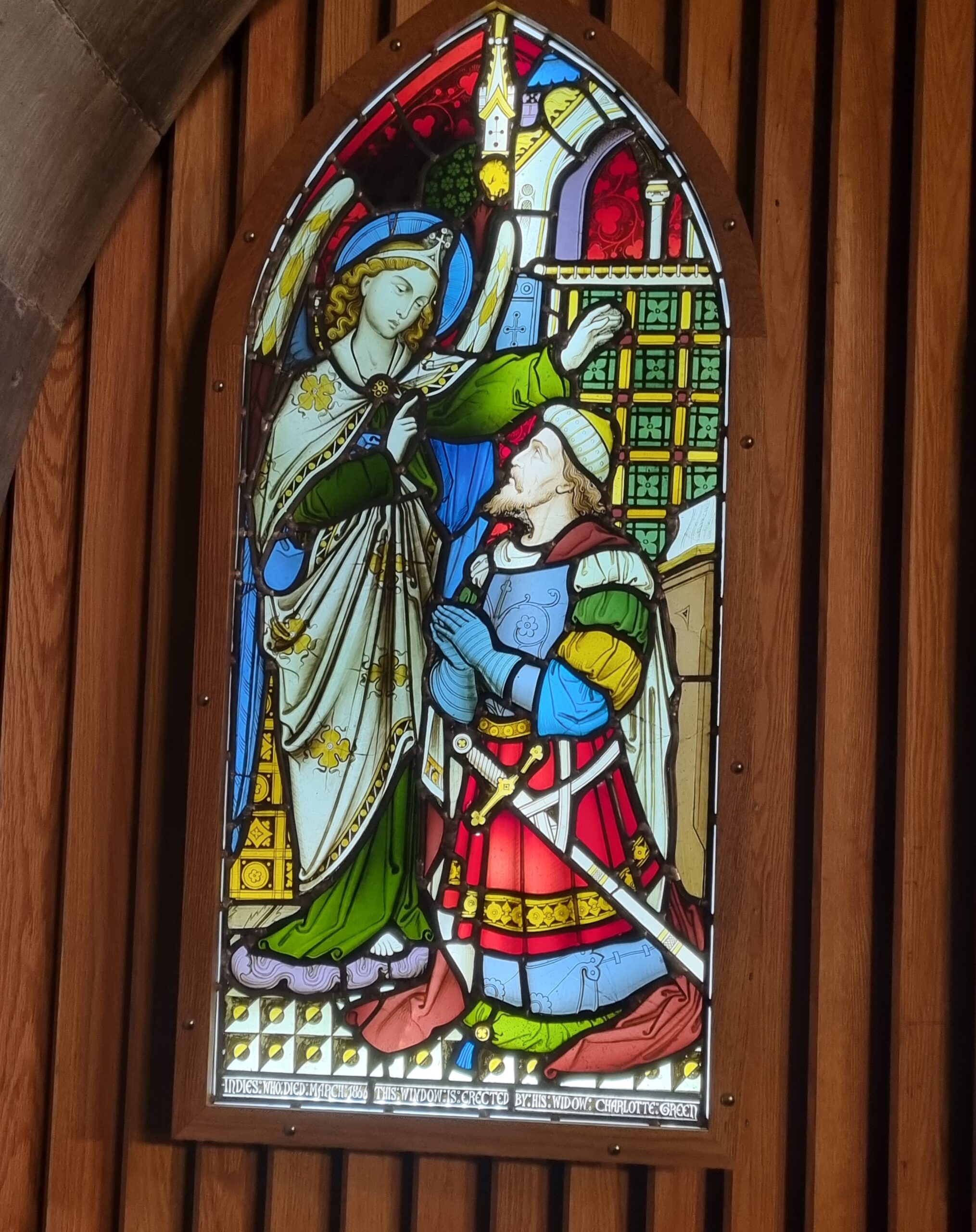
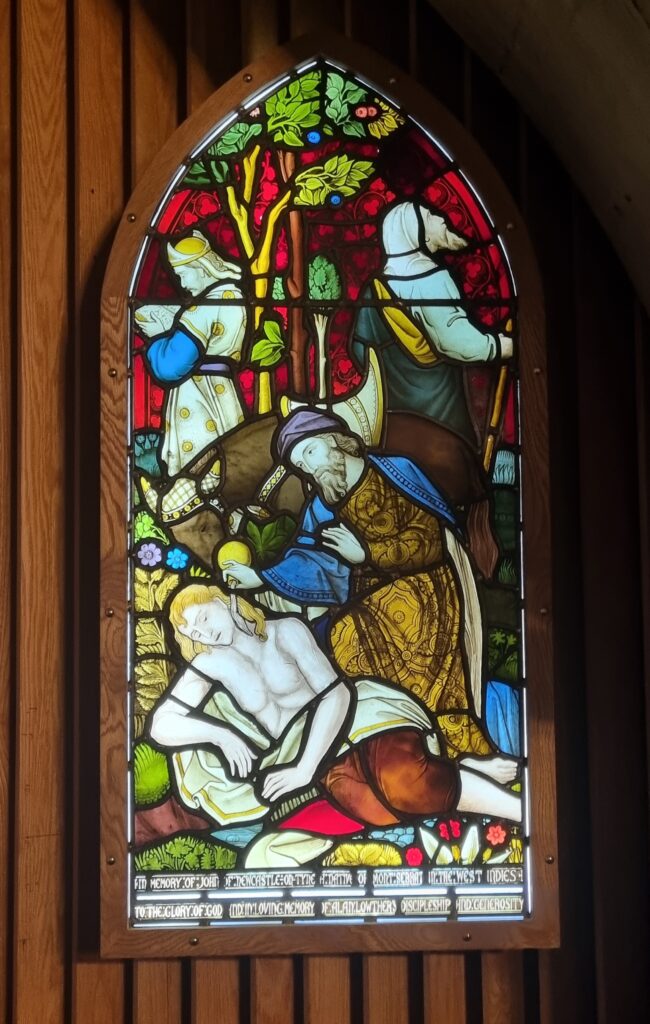
As we know, following John’s death, Joseph and Charlotte married in 1866 and in the 1867 Register of Electors, Joseph is now recorded as living at 13, Grey Street, Newcastle, which is described as a ‘eating house’. The 1871 Census records Joseph as living with his wife, Charlotte, and he is described as being a ‘Hotel Keeper’. In the 1878 Register of Electors, Joseph is still recorded as living at his Grey Street address, but by the 1881 Census, Joseph is now a widower, is being described as a ‘Retired Restaurant Keeper’ and lives in 6, Watling Street, Corbridge, with his younger sister, Barbara, aged 62. The 1891 Census records Joseph, aged 83, as now living at Shu Shan, 18, Watling Street, along with a servant, Elizabeth Keen.
Charlotte died, aged 69, in March 1875. Joseph died on the 18th March 1892, aged 84, meaning he was a widower for 17 years. Joseph left £1,650 to a Margaret Storey, a Spinster.
So, going back to the name of the house in Corbridge, Shu Shan – how the heck did it get its name? A number of possibilities emerge…..the first one considered is the Tongzhou born Shu Shan, who was a faithful and loving Christian mother who, along with her three children, were martyred by the Boxers in June 1900. This date is relevant as this is many years after the Joseph and Charlotte lived in the house, so we can discount this as an inspiration for its name. The Chinese – English dictionary records ‘Shu Shan’ as being a district of Hefei city – looking at what we know about Joseph and Charlotte’s life, it seems a very remote possibility that they would have visited there. Another theory postulated on a local forum is that the words are anglicized Chinese, Xiao Shan, meaning ‘little hill’. So, basically, we don’t have a clue!!
Anyway, a few mysteries to solve at some point….. although Shu Shan has Joseph’s initials and 1876 on it, he was at number 6, Watling Street in 1881…. Did he move out for a while and then move back in prior to the 1891 Census? Or was Shu Shan built new for Joseph whilst living at number 6, Watling Street – a 5 year building project, starting in 1876, perhaps!! Or has there been a renumbering of Watling Street – details for number 18 aren’t actually recorded in this Census, stopping at number 14. And, finally, who or what is the Shu Shan who inspired the name on the monument that caught my eye? And what is John Roach’s story? I’ll have to get back to you on these, when I get a minute!!
UPDATE!!!!!! We found a minute…….read all about John Roach’s unique story – from being a slave to becoming a successful and popular business man in Newcastle. We didn’t have to look far to find his grave, either; sometimes you can’t see the wood for the trees.
